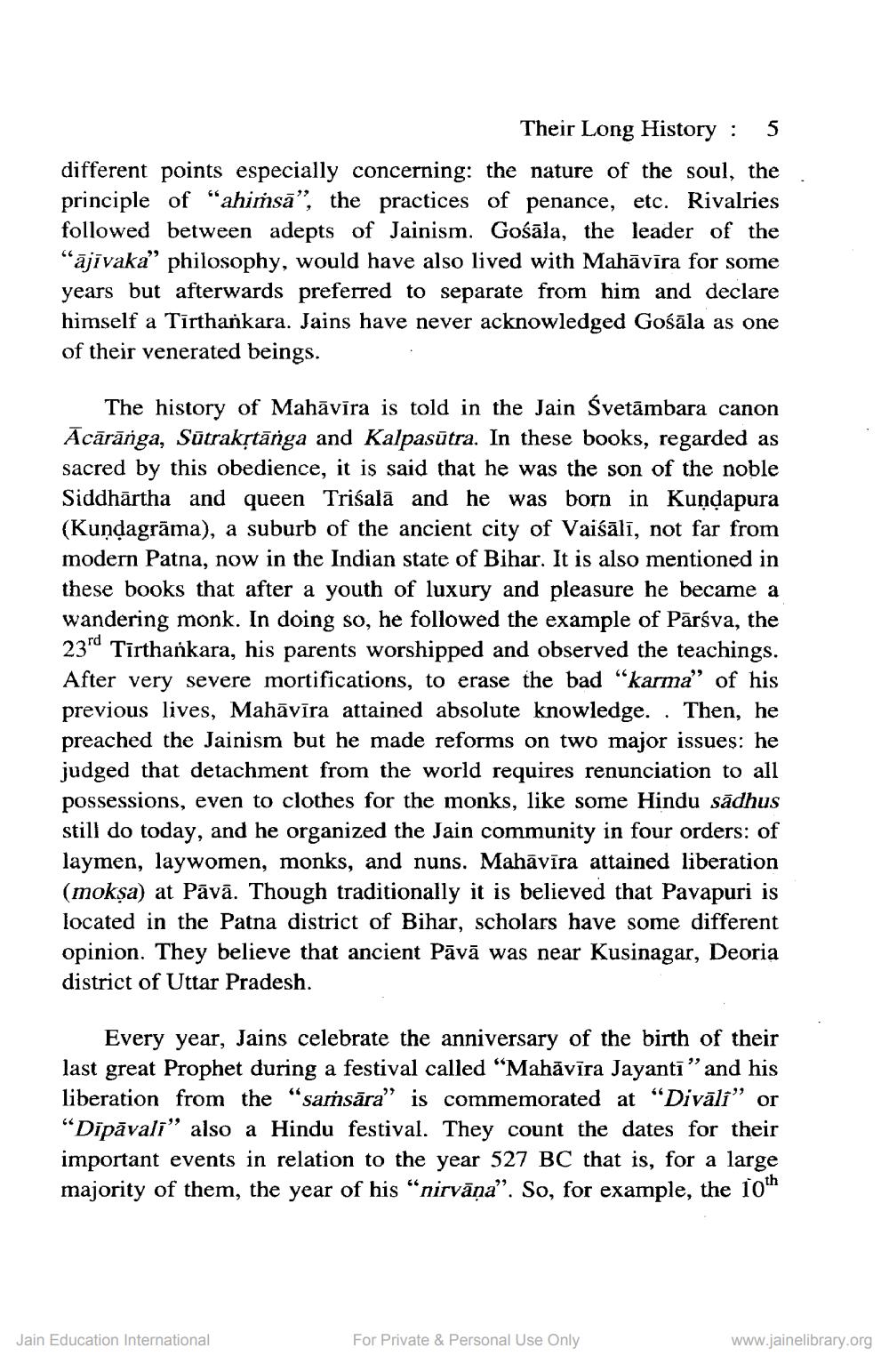________________
Their Long History :
different points especially concerning: the nature of the soul, the principle of "ahimsa", the practices of penance, etc. Rivalries followed between adepts of Jainism. Gośāla, the leader of the "ājīvaka" philosophy, would have also lived with Mahāvīra for some years but afterwards preferred to separate from him and declare himself a Tirthankara. Jains have never acknowledged Gośāla as one of their venerated beings.
The history of Mahāvīra is told in the Jain Śvetambara canon Acārānga, Sūtrakṛtānga and Kalpasūtra. In these books, regarded as sacred by this obedience, it is said that he was the son of the noble Siddhartha and queen Triśalā and he was born in Kundapura (Kuṇḍagrāma), a suburb of the ancient city of Vaiśālī, not far from modern Patna, now in the Indian state of Bihar. It is also mentioned in these books that after a youth of luxury and pleasure he became a wandering monk. In doing so, he followed the example of Parśva, the 23rd Tirthankara, his parents worshipped and observed the teachings. After very severe mortifications, to erase the bad "karma" of his previous lives, Mahāvīra attained absolute knowledge.. Then, he preached the Jainism but he made reforms on two major issues: he judged that detachment from the world requires renunciation to all possessions, even to clothes for the monks, like some Hindu sādhus still do today, and he organized the Jain community in four orders: of laymen, laywomen, monks, and nuns. Mahāvīra attained liberation (mokṣa) at Pāvā. Though traditionally it is believed that Pavapuri is located in the Patna district of Bihar, scholars have some different opinion. They believe that ancient Pāvā was near Kusinagar, Deoria district of Uttar Pradesh.
5
Every year, Jains celebrate the anniversary of the birth of their last great Prophet during a festival called "Mahāvīra Jayanti" and his liberation from the "samsara" is commemorated at "Divāli" or "Dīpāvalī❞ also a Hindu festival. They count the dates for their important events in relation to the year 527 BC that is, for a large majority of them, the year of his "nirvāṇa". So, for example, the 10th
Jain Education International
For Private & Personal Use Only
www.jainelibrary.org




